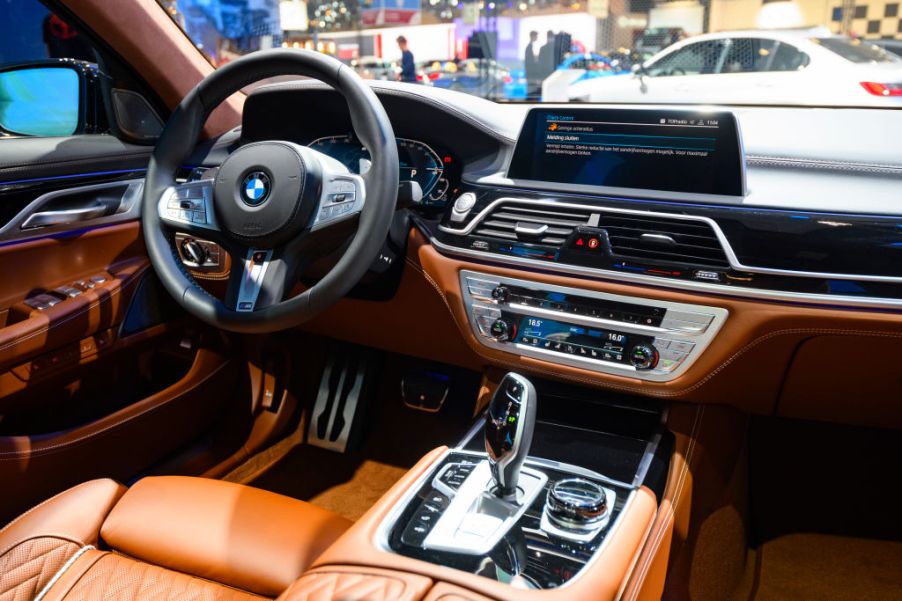
BMW’s Reason to Not Offer Android Auto Until Now is Surprisingly Shallow
BMW makes luxury vehicles that are equipped with some of the most advanced tech available. Enormous touchscreens, standard driver-assistance safety features, and even an optional semi-autonomous driving mode are some of the goodies you’ll find on these cars.
And even though these vehicles have had Apple CarPlay compatibility for some time, they don’t have Android Auto. Android users will be pleased to know BMW will be adding this feature later this year, as Sean O’Kane of TheVerge.com tells us. But BMW’s reason for waiting to offer Android Auto seems rather lightweight, as you’ll soon see.
What is Android Auto and why your BMW needs it

In 2015, Google developed Android Auto, a mobile app that is compatible with a car’s infotainment system. With it, you can use many of your Android smartphone features on your car’s built-in display. You can make and receive calls, check your voicemail, and get turn-by-turn directions through Google Maps. Android Auto also lets you listen to music, books, or podcasts, manage your day through your Google calendar, and send and receive text messages.
You can access these functions through Google apps on the Android Auto home screen. These apps will seem very familiar to most owners of Android devices. To interact with this software, you can use Google Assistant voice commands, use the touchscreen, or turn a knob or other controls such as the dial or directional buttons.
Using smartphone compatibility software such as Android Auto or Apple CarPlay instead of your BMW’s built-in infotainment system is a safer way to enjoy its infotainment offerings. Research from the American Automobile Association Foundation for Safety has shown that using this software is less distracting to drivers because it performs functions such as making a call or sending a text message much faster than a car’s built-in system.
How BMW plans to implement this feature
Most vehicles that are Android Auto compatible require an Android user to connect their phone to the car via a USB cable, but BMW will be installing a wireless version of Android Auto in some of its models. Instead of using Bluetooth to connect a phone to the car radio or infotainment system as traditional Android Auto does, wireless Android Auto accesses both the phone’s and the car’s Wi-Fi functionality.
In BMW’s case, the Wi-Fi functionality is embedded in the newest version of its in-car operating system and its upper-trim infotainment hardware. These features are available on all 2019/2020 3 Series, 5 Series, 7 Series, and 8 Series sedans. They also will be available on the latest X3, X5, and X7 SUVs. Buyers should look for BMW models with wireless Android Auto integration starting in July 2020.
And, at this point, wireless Android Auto is compatible only with Pixel, Nexus, and Samsung smartphones are running on Android 9.0 Pie.
What’s different about this version of Android Auto? And why did we have to wait for it?
One thing that makes this version of Android Auto different is that it brings a new level of convenience in connecting your smartphone to your car. You no longer need to plug and unplug your phone every time you use the app. Instead, your phone connects immediately to the car’s infotainment system when you get in the vehicle.
Another difference between BMW’s wireless version and the more conventional one is that few automakers are using it right now. Part of the reason is that although Google launched this version back in 2018, it has been slow to push this version out to car manufacturers.
But Ford has hinted that some of its new models will have wireless Android Auto later this year, according to Igor Bonifacic of Engadget.com. So far, Blue Oval is the only other carmaker besides BMW to implement this technology.
Which leads to our next question: what took BMW so long to offer Android Auto at all? Its cars have had the wired version of Apple CarPlay for some years now and wireless Apple CarPlay has been available since late 2018. And until quite recently the automaker charged owners to use this feature.
BMW’s reply to this question was that most of its customers were using Apple products, so it concentrated on CarPlay. It’s a flimsy response, even if BMW has the statistics to back it up. Also, it seemed to disregard potential and current customers who own a small fraction of the more than 2.5 billion active Android devices worldwide.
Android users should take heart, though, because BMW realized its blunder. Its customers have told the automaker that they would like Android Auto compatibility. The automaker will satisfy their request and deliver this feature in a way few other automakers can – at least for now.


